As your spring crops start to dwindle, here are some ideas of what to plant in late summer to replace those “spent” plants!
As the heat turns up for summer’s finale hurrah here in the Midwest, I start thinking about not just next year’s garden (although it’s always on my mind); I’m thinking about what I can plant now.
Those green beans I planted in early summer are slowly dying off. I’ve canned and frozen about all the green beans I could want for the year, so it’s a good thing!
While some spring and early summer plants will thrive for another month or so, it’s time for others to head to the compost bin to free up some valuable garden space.
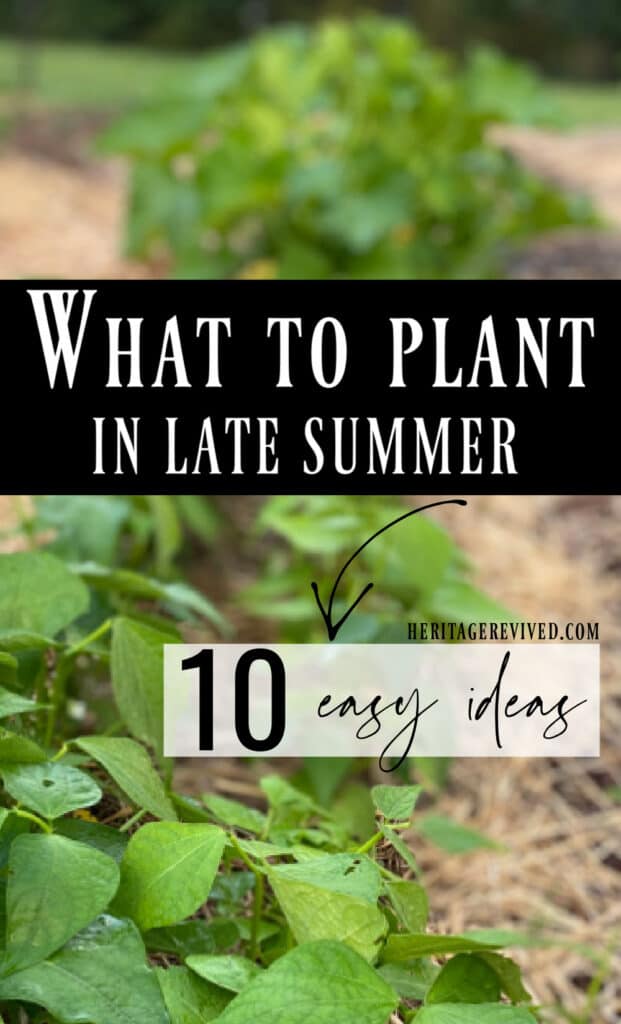
Second planting vegetables: Don’t put the garden to bed yet!
To be honest, it’s tempting to do nothing with the garden once things start getting a little crispy and not producing as much.
Gardening becomes not-so-fun by about the end of August if we’re honest, between the extra watering that’s needed and fighting the pests that are looking for a free buffet in the hot, dry weather.
BUT, don’t make the mistake of overlooking vegetables that can thrive from seeds sown at the end of summer.
This site contains affiliate links to products. As an Amazon associate, I earn from qualifying purchases. Please read my disclosure for more info.

By determining your first frost date of the year for your region, you can decide when to start a second planting in time to harvest before that date.
Some plants can even withstand a little frost, which opens up more options for planting.
Row covers and grow tunnels can also be used to protect from frost and extend the growing season.
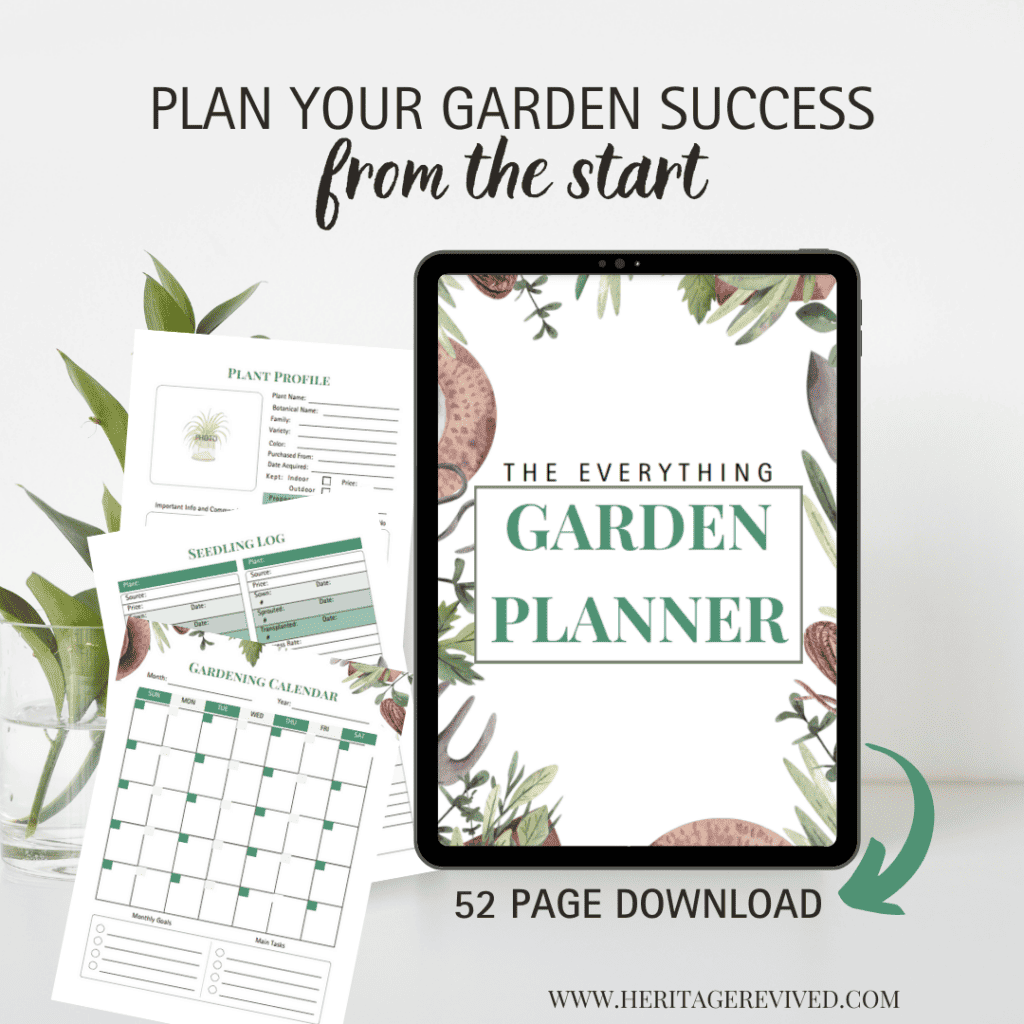
Choosing the right late summer vegetables to grow
We’ll get to my preferred list of late summer veggies; but first, a few tips on choosing what you should plant at this time of year:
- Always, as a rule of thumb, only plant what you or your family actually likes to eat!
- Nothing wrong with trying new things, but start small with those experiments and grow the most of what you know and love.
- Take stock of what you’ve already preserved to this point, and think about what veggies you’d like to add to round out your winter pantry; consider prioritizing the most space for those that can be preserved easily (i.e., spinach versus lettuce.)
- Talk to local farmers or your university extension office about what grows well in your region in late summer into fall, or do a little research ahead of time. (Think about your typical late summer rainfall, pests and other factors that can help you determine what is best to grow in a season that will soon be transitioning– whatever that is like in your zone.)
- Read seed packets carefully and look for plants that have a shorter growing season.
Also read:
Where to buy the best heirloom seeds online
How to fill up raised garden beds (cheaply)
What to plant in August (or late summer)
These are just a few of our favorites to start growing in August- just in time to harvest before the first frost for many regions.
For this list, I’m only including plants that are easy to direct-sow in the garden (as opposed to starting seeds indoors and transplanting to the garden).
Lettuce
Lettuce is a great choice as most varieties grow quickly, with little effort.
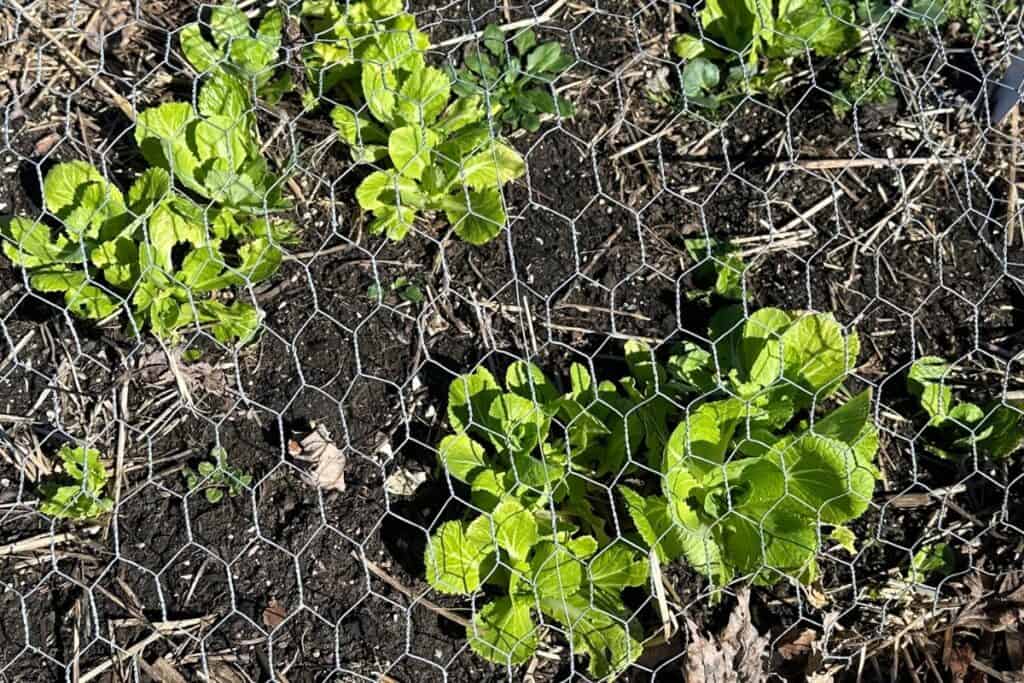
Leaf lettuce varieties such as this one are a beautiful addition to a fall garden and can be enjoyed as baby greens in just a few weeks.
Bok Choy
There are so many types of Bok Choy to choose from, but most do well in cooler fall temperatures. They’re hearty as well as beautiful in the garden.
Carrots
I love finding different varieties of carrots that allows me to grow them in spring, summer and fall.
Little finger carrots are a good choice for planting in late summer.
My great-grandparents often left them in the ground as long as possible in the winter (like a built-in cold storage), and they only became sweeter with the colder temps.
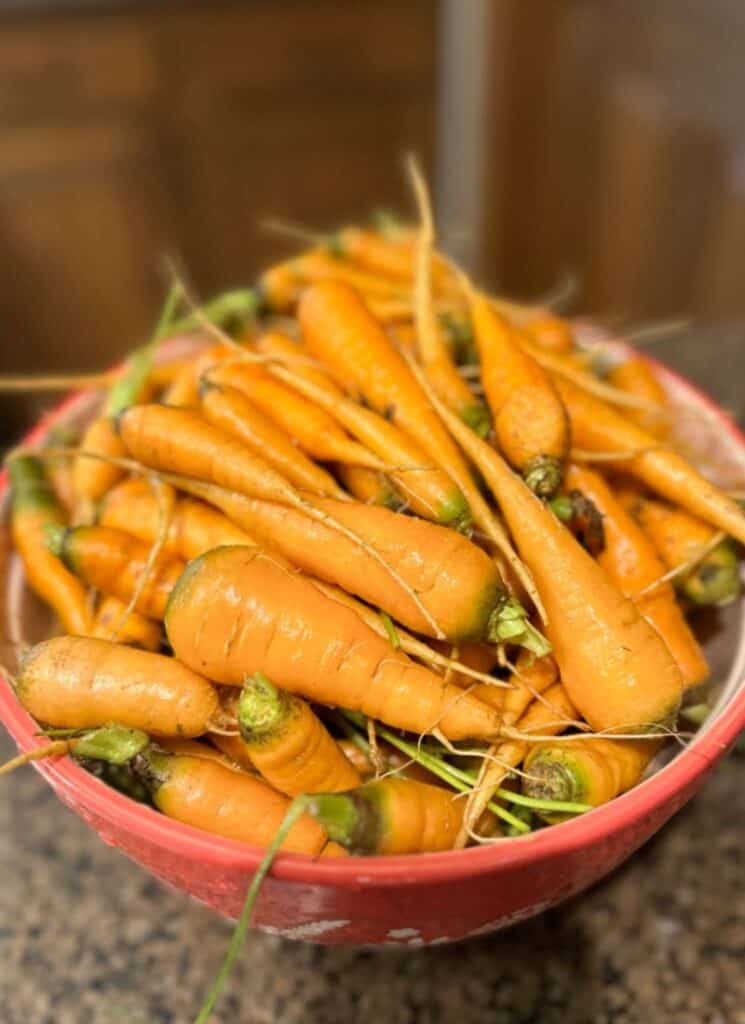
Kale
Kale, including this Dwarf Siberian variety, is considered very frost-tolerant and less susceptible to garden pests.
It is suggested to blanch kale before freezing, and after freezing it can last for up to a year.
Green Beans
We had amazing results with our Contender beans that we planted this year.
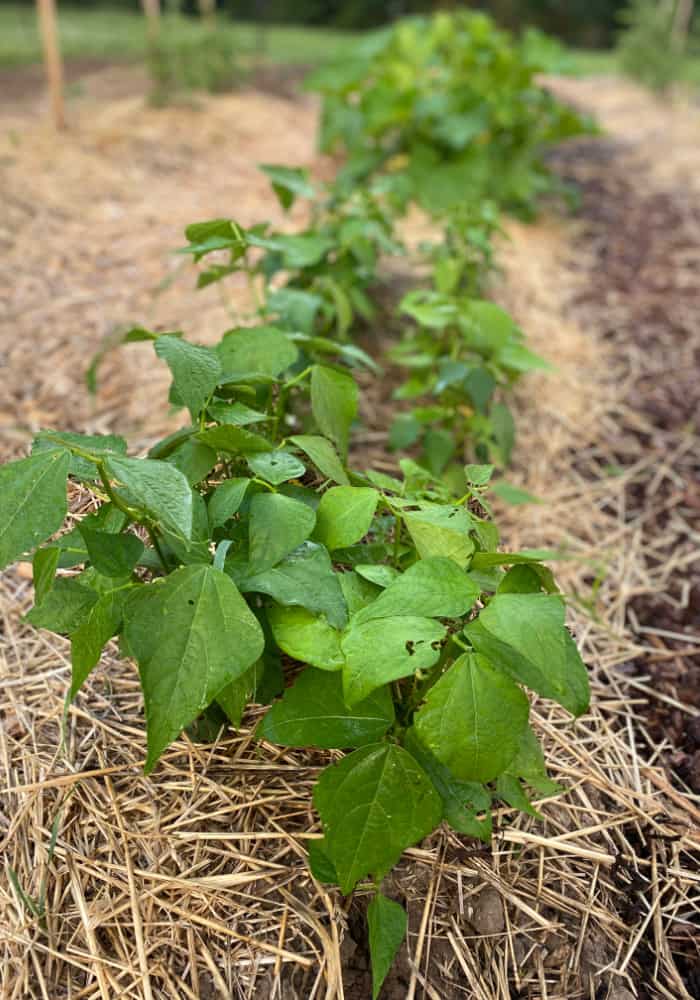
They are ready for harvest in around 50 days, and produced enormous yields in a small space. Freeze or pressure can to enjoy all winter!
Spinach
Spinach is easy to grow and great raw or cooked. Unlike lettuce, it can be frozen so it can be enjoyed year-around.
Plant spinach seeds 6-8 weeks before the first frost to get the most from your planting.
Bunching onions
Bunching onions are easier to grow directly from seed in the garden than other types of onions.
In some climates, you can plant in late summer to enjoy by fall and in cooler zones your onions can overwinter and will be ready to harvest by spring.

Bunching onions: the easiest onions to grow!
Varieties such as Heshiko bunching onions are known to be hardy even in harsh winter climates, and can be grown as a perennial if you divide the bulbs year after year.
Garlic chives
I just learned about garlic chives not long ago, and now I’m hooked! Like onion chives, but with a garlic flavor.
Some people grow these as microgreens indoors; that’s how easy they are to grow. And, they grow quickly as long as it’s not extremely hot.
Garlic chives, also known as Chinese leeks or Chinese chives, can be used as a fresh garnish and are also easy to dry in the sun.
(Set out on a screen or a parchment-lined cookie sheet.)
If you’re in a zone that receives consistently high temps in summer, consider waiting until temps are around or below 85 degrees to plant, otherwise garlic chives may go dormant.
Garlic (traditional clove)
If you plant garlic in the late summer, you can enjoy it next spring (rather than waiting for spring to enjoy in the fall).
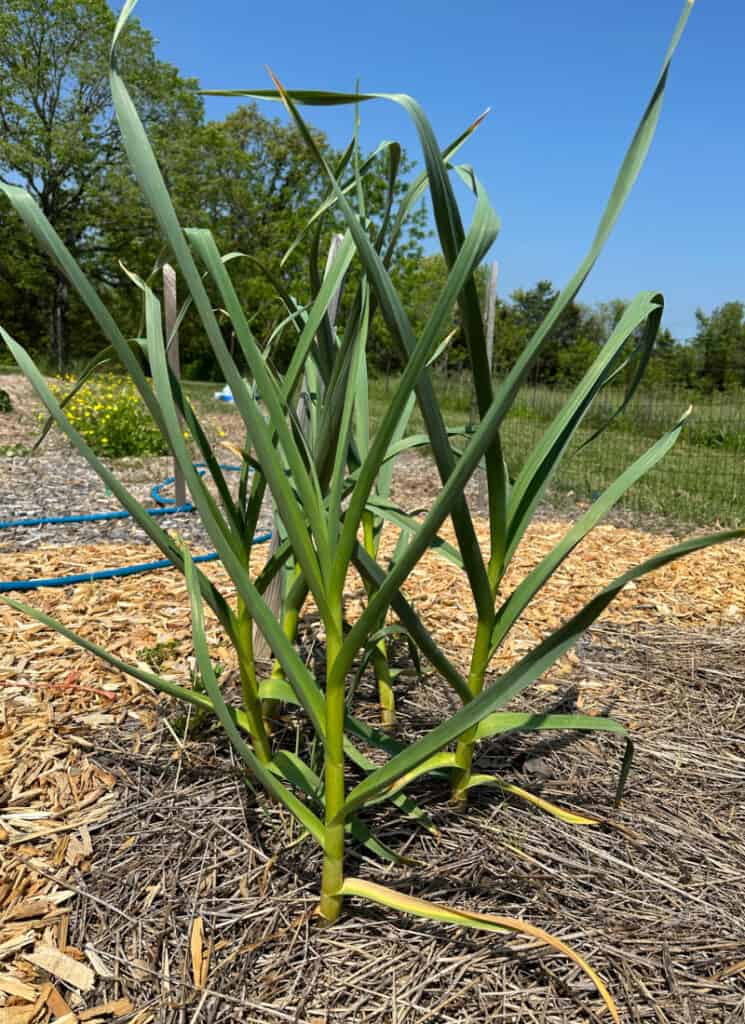
Tip: if you purchase your garlic to plant from Amazon, choose a US-based company for best results.
Sugar snap peas
My kids LOVE sugar snap peas, so it’s a no-brainer to include in our late summer garden.
The bush varieties grow similarly to green beans, and some can be ready to harvest in as little as 4-6 weeks!
Cabbage
Traditional advice is to start cabbage seeds indoors about 8-10 weeks before the first frost.
However, in some climates you may be able to start your seeds outdoors about 4 to 6 weeks ahead of the last frost.
It never hurts to experiment with different methods. In our zone, warm temps can often extend well into October, making direct sowing possible some years (depending on weather).
Brocolli
Like cabbage, starting seeds indoors can provide more consistent results.
This year, I am experimenting with this type of Chinese brocolli that is supposed to be easier to grow than traditional brocolli.
But depending on your particular weather patterns in the summer through late fall, you may be able to direct sow brocolli about 4-6 weeks ahead of the first frost.
In my zone 6b, I planted Chinese brocolli seeds around the first of August.
Cucumbers
If you missed planting cucumbers in spring, you can always start them in late summer for a fall harvest.
Cucumbers need lots of moisture and can thrive in cooler fall temperatures.
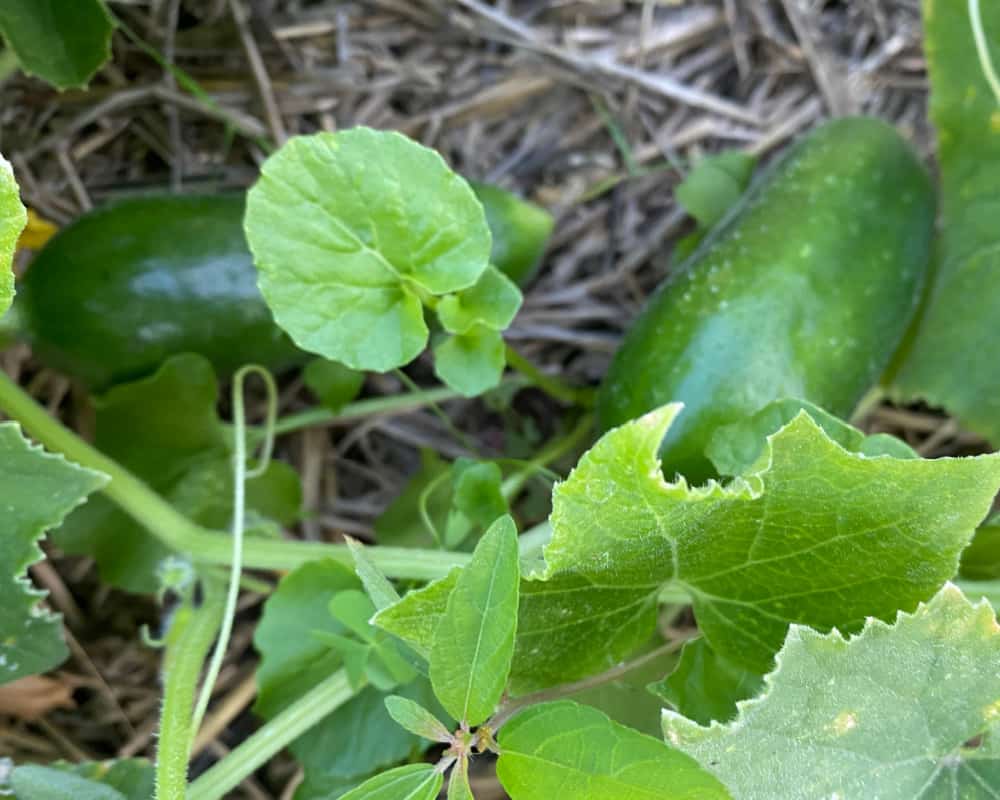
Allow cucumbers to grow up a trellis or cattle panel to save space for these vining plants.
You can make a large supply of pickles from just a few cucumber plants. Or, try making cucumber chips.
Radishes
Some varieties of radishes are well-suited for fall/early winter harvesting. Look for seeds that specifically state they are suited for planting in late summer.
This year, we’re planting Chinese Shawo Radishes as a fun addition to our late summer garden.
Get started on your late summer vegetable garden
Now that you know what to plant in late summer, make sure to plan ahead so you can find or order seeds, and start mapping out your fall garden.
(Our Gardening Planner can help!)
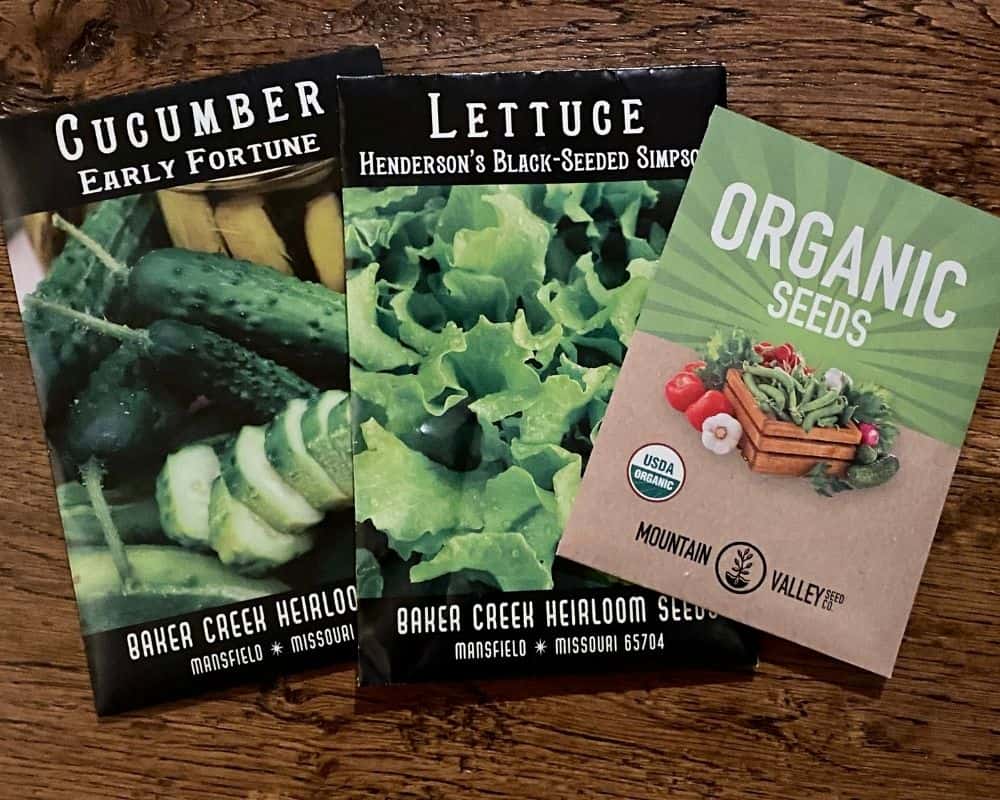
Don’t forget to pay attention to plants that are existing in the garden which may not grow well next to others. (i.e., summer crops that might grow large and over-shade your new plantings, or plants that aren’t compatible.)
You may have to water your seeds more regularly than you would after a spring planting, but in fall you’ll enjoy harvesting these plants in cooler temps!
Here’s to a great start to your late summer garden!
5 Organic weed-control methods
How to grow vegetables from seed
Growing potatoes from true seeds: Results of our experiment
Preserving basil for winter: two EASY ways
How to Preserve Vegetables (outside the fridge or freezer)